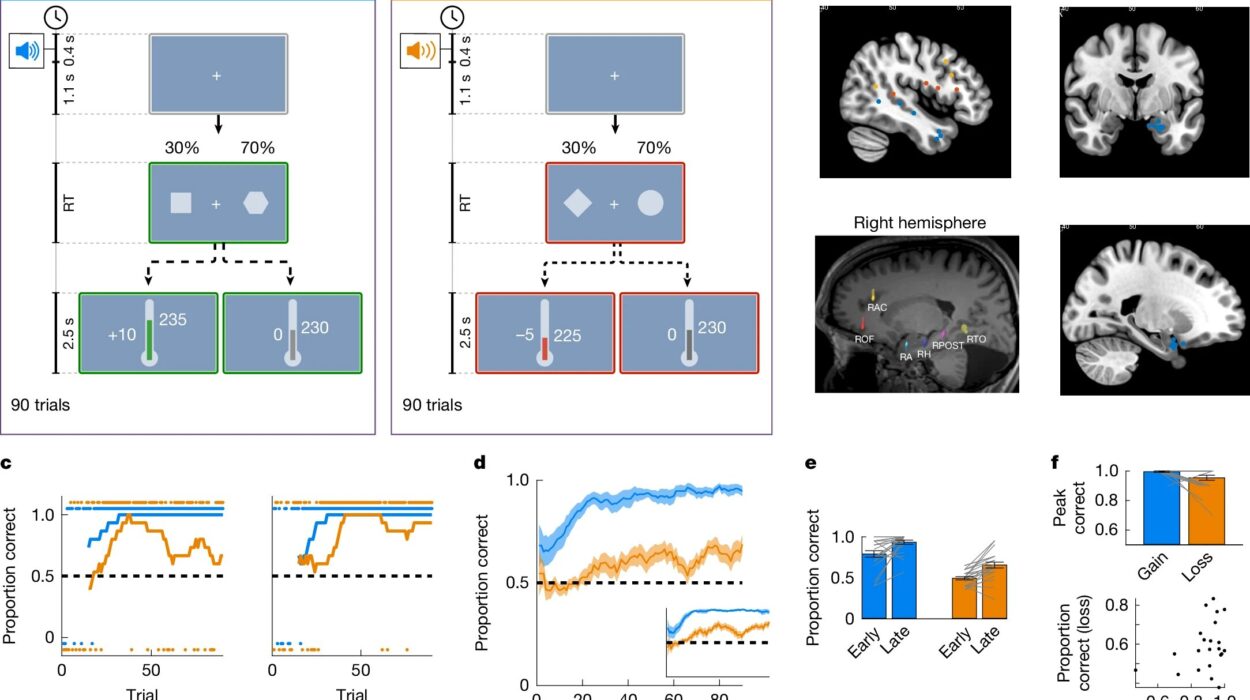Take a moment to look around. The colors you see, the sounds you hear, the warmth of the sun on your skin, the scent of morning coffee wafting through the air—these are the ingredients of reality, right?
But what if I told you that everything you’re experiencing—the world as you know it—isn’t happening outside you, but inside? That it’s not your senses giving you reality, but your brain inventing it?
It may sound like science fiction, but it’s one of the most astonishing truths of neuroscience. Reality, as you know it, isn’t something you witness passively. It’s something your brain actively creates every second of your life.
Your brain is not a camera, not a tape recorder, not a neutral observer. It’s more like a magician: creative, adaptive, and often deceptive. It builds a world for you to live in—and sometimes, it gets things wildly, beautifully, or tragically wrong.
This is the story of how your brain invents reality.
The World Isn’t What It Seems
We grow up believing that we experience the world exactly as it is. That the sky is blue because that’s its color. That objects exist in the shapes and colors we see. That a loud bang or a sweet taste is an inherent property of something in the world.
But reality doesn’t start out as color, sound, or smell. It starts as energy. Light waves, pressure changes, chemical molecules. What your brain receives is not a rainbow or a melody or the taste of chocolate. It receives raw data—signals. Photons hitting the retina. Air vibrations entering the ears. Molecules stimulating the nose or tongue.
These signals are meaningless on their own. They don’t carry color or sound or flavor. They are just patterns.
And here’s where the magic begins: your brain takes that pattern and translates it into something you can experience. Color, for instance, is not “out there.” It is something your visual system invents in response to different wavelengths of light. A rose isn’t red; your brain paints it red.
This holds true for everything. The world isn’t colorful or loud or fragrant until your brain interprets it that way. Reality, as far as your conscious mind is concerned, is always a reconstruction.
Inside the Prediction Engine
At the heart of this reconstruction lies one of neuroscience’s most revolutionary insights: your brain is not a passive receiver—it’s a prediction machine.
Instead of simply waiting for information to arrive from your senses and then reacting, your brain is constantly guessing what’s going to happen next. It creates models of the world, then updates them based on incoming data. This system is called predictive coding, and it’s changing everything we thought we knew about perception.
Imagine walking through your house in the dark. You reach out to find the light switch. You know where it is. Your brain predicts its location, shape, texture. If your hand meets the switch as expected, all is well. But if the wall is bare, your brain goes into surprise mode, quickly re-evaluating and updating its model.
These predictions happen not just when you reach for things, but all the time, in everything you experience. You don’t see the world—you predict it, and your brain compares its predictions to actual inputs. If the match is close, you see the world clearly. If the match is off—if there’s a sudden loud sound, an unfamiliar face, or a flash of light in your periphery—your brain is jolted into paying attention.
Even in the best conditions, what you perceive is a best guess. And most of the time, you don’t notice this constant guessing game—because your brain is astonishingly good at it.
When the Mind’s Mirror Cracks
Of course, the very mechanism that builds reality can also break it. Hallucinations, optical illusions, phantom limbs—these aren’t malfunctions of the senses, but of the brain’s reality-modeling system.
Consider phantom limb syndrome. A person who loses an arm or leg may still feel the missing limb vividly. They might feel pain, itching, movement—despite the limb being gone. That’s not the body speaking. That’s the brain clinging to its map of the body. It predicted a limb, and even when the limb disappeared, the model remained.
Visual illusions tell the same story. Take the famous checker shadow illusion, where two squares on a board look like different shades but are actually the same. Your brain, assuming a shadow, adjusts the colors it sees. The illusion isn’t in the eyes—it’s in the model your brain builds to make sense of light and shade.
Or think of auditory illusions like the “Yanny/Laurel” debate. The same sound, interpreted differently by different brains. Why? Because the brain isn’t playing back a tape. It’s interpreting sound through a complex model of language, frequency, and expectation.
Mental illness, too, can reflect breakdowns in reality modeling. In schizophrenia, people may hear voices or see things that aren’t there—not because their senses are wrong, but because their brain’s prediction system is misfiring. In depression, people perceive a world filtered through gloom not because the world is sad, but because the brain interprets it that way.
In every case, the brain isn’t failing to show you reality—it’s showing you a different one. Your version of the world is always an invention. Sometimes, it’s just a lonely one.
The Social Brain: Inventing Other People
Reality isn’t just colors and sounds—it’s people, emotions, intentions. And here too, your brain doesn’t merely observe. It constructs.
Every time you talk to someone, your brain is trying to guess what they’re feeling, what they mean, what they’ll do next. This is the job of the social brain, a system honed by evolution to read faces, voices, and body language.
But it goes beyond that. Your brain doesn’t just read people. It fills in who they are. Have you ever misjudged someone based on a first impression? That’s your prediction engine at work. It takes limited data—a tone of voice, a gesture—and fills in the gaps with assumptions based on past experience.
This is called theory of mind—the ability to imagine what others think and feel. It’s powerful, but it’s not perfect. Your brain is always guessing what’s behind someone else’s eyes. And sometimes it guesses wrong.
The most intimate human experiences—love, trust, betrayal—are shaped by models your brain constructs. These models are updated constantly, but they’re always a step removed from truth. In a very real way, you don’t see other people. You see your brain’s version of them.
Language: Reality in Symbols
If perception builds the raw world and social cognition fills it with meaning, then language is the architecture that binds it all together.
Words are not reality, but they can shape it. If you grow up in a culture with no word for “blue,” you may perceive that color differently. If you speak a language where time flows vertically instead of horizontally, you may imagine the past as below you instead of behind.
Language encodes the way your culture models the world, and your brain absorbs it so deeply that it literally alters your neural pathways. The way you speak becomes the way you think. And the way you think becomes the way you experience.
Through metaphors, we borrow understanding from one domain to explain another: “time is money,” “life is a journey,” “he’s carrying emotional baggage.” These metaphors aren’t just poetic. They become how our brains structure concepts and feelings.
Your reality, in many ways, is written in the language your brain speaks.
Memories: A Past Rewritten Daily
We like to think of memory as a mental hard drive—a record of what happened. But nothing could be further from the truth. Memory is not a filing cabinet. It’s a reconstruction.
Each time you remember something, your brain rebuilds it. And every time it rebuilds, it changes. Details fade or sharpen. Emotions amplify. Context intrudes. Memories don’t live in a single place but are spread across networks in your brain—sensory, emotional, conceptual—all working together.
Even your most cherished memories may not be accurate. They’re real to you, yes. But they’re also versions of reality shaped by your brain’s current beliefs, feelings, and needs.
Sometimes, your brain even invents memories entirely. False memories can be planted by suggestion, by repetition, or by the blending of real and imagined events. Eyewitnesses swear to events that never occurred. Children recall detailed stories that science says couldn’t have happened.
Your brain isn’t lying. It’s doing its job: inventing a coherent reality from the information it has.
Emotion: Coloring Reality from the Inside
Finally, we come to the most personal layer of all: emotion. Your feelings don’t just add color to life. They are part of how reality is constructed.
The same event—say, rain on a Sunday—can be gloomy or joyful depending on your mood. The same song can make you cry or dance. That’s not the world changing. That’s your brain’s emotional lens altering what you perceive.
Neuroscientists now understand that emotion is not separate from reason, but intertwined with it. The amygdala, insula, and other regions work with the default mode and sensory networks to interpret the world emotionally. You don’t first see something and then feel it. You feel it as you see it.
This emotional framing doesn’t just affect how you remember things. It affects what you notice, what you care about, even what you consider true.
In times of stress or trauma, the brain can distort reality to protect itself. In states of joy, it can broaden attention and heighten perception. Emotion is not an add-on. It’s the atmosphere in which reality is invented.
Reality as a Collaboration
So where does all of this leave us? If your brain invents reality—and so does mine—then whose reality is “real”?
The answer is both sobering and beautiful.
There is no one, fixed reality that we all access directly. What we call “reality” is a shared negotiation—a collaboration of brains trying to match their models against a common world.
We align through language, culture, science, and empathy. We test our assumptions. We challenge each other’s beliefs. We strive, not for objective truth in the absolute sense, but for coherence, usefulness, and shared meaning.
This is why communication matters. Why stories matter. Why diversity of thought is not a threat, but a strength.
Your reality is yours—but it’s also part of something bigger.
The Conscious Dream
When you close your eyes at night and fall into dreams, your brain builds a world that feels utterly real. Trees sway, people speak, and emotions run deep—even though none of it exists outside your mind.
Wakefulness is not so different. Your senses may draw from an external source, but the final experience—what you call reality—is still a construction.
That doesn’t make it meaningless. It makes it miraculous.
Your brain, soft and silent in its dark vault, has never touched the sky, never tasted ice cream, never kissed another. And yet, by interpreting signals, weaving memories, and projecting feelings, it gives you a life rich with color, sound, story, and wonder.
You are living in the most spectacular illusion imaginable.
And the illusion is real enough to love.






